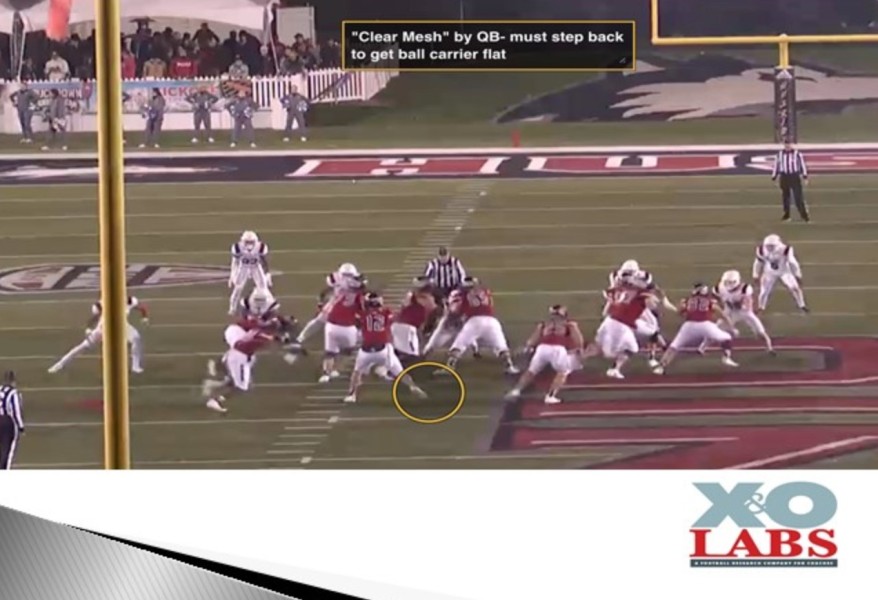By Mike Kuchar
Senior Researcher/Co-Founder
X&O Labs
Twitter: @MikekKuchar
If you haven’t built your run game around four-surface formations yet this season, now is the time to start. Whether you’re a Pin and Pull, Tight Zone, Gap, or Duo outfit, four surface presentations not only create angles and combinations play side but also create extra cut points for the ball carrier backside. At Northern Illinois and Rice University, the four-surface Pin and Pull created the separation needed to get the ball carrier in the alley. At Rice University, the four-surface pin and pull alleviated the second puller from working to the point, allowing him to work to the high safety. And at the University of Minnesota and Davison University (NC) building in four-surface formations in the tight zone run game, allowed the unblocked defender to be positioned a gap wider from the mesh where he’s reduced to an arm tackle on the bend back. This week, we studied how four programs have built their top runs off four-surface formations.
Pin and Pull Concepts:
Source: Eric Eidsness, offensive coordinator, Northern Illinois University
Mesh Variations:
The Huskies utilize two alignments in its Pin and Pull concept: pistol and sidecar alignments. In both alignments, the ball carriers aiming point is one yard outside the tight end, which includes the wing element in four-surface formations.
The mesh rules for both are below:
Pistol Alignment:
- Open to the play side at a 45-degree angle
- Get the ball back to the ball carrier by the third step.
- Drop back three steps after mesh to sell play-action pass (boot)
The ball carrier is taught to execute a “V” step, which opens his hips to get downhill. It’s the typical crossover, plant footwork. According to Coach Eidsness, the key coaching point is for the quarterback to keep him online with the D gap aiming point, which he calls “staying high.” “We don’t want to get downhill too fast,” he told me. The backside C gap can be controlled with naked or with motion or a backside tight end.
Offset Alignment:
In sidecar alignments, the quarterback sets his toes at 4.5 yards with the ball carrier’s toes at 5 yards. It’s the quarterback’s job to get off the line with a step-back technique or what some coaches call a “clear” mesh. “We want the running back to be able to run laterally and not run downhill and have to bubble back to the perimeter,” said Coach Eidsness. “The quarterback has to allow him to stay flat.” In sidecar alignments, it’s built-in for the quarterback to read the backside C gap defender.










